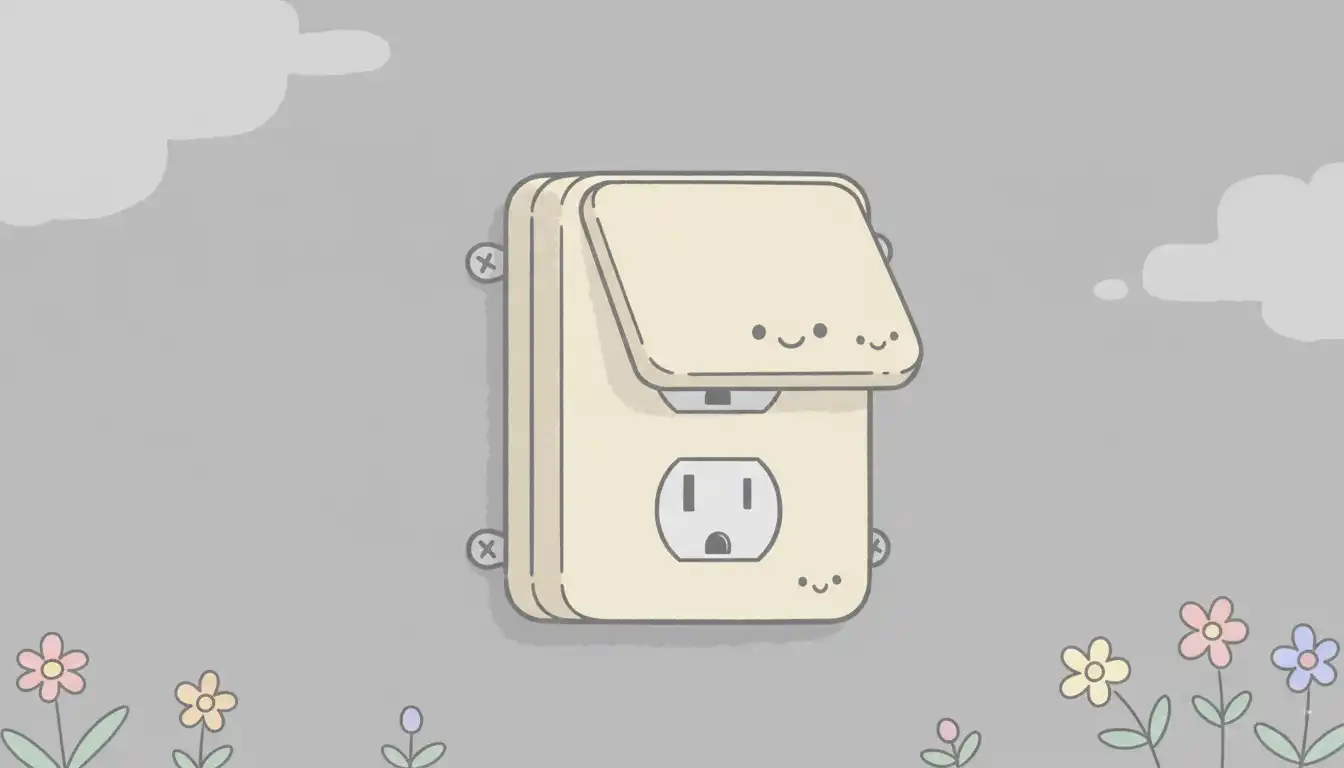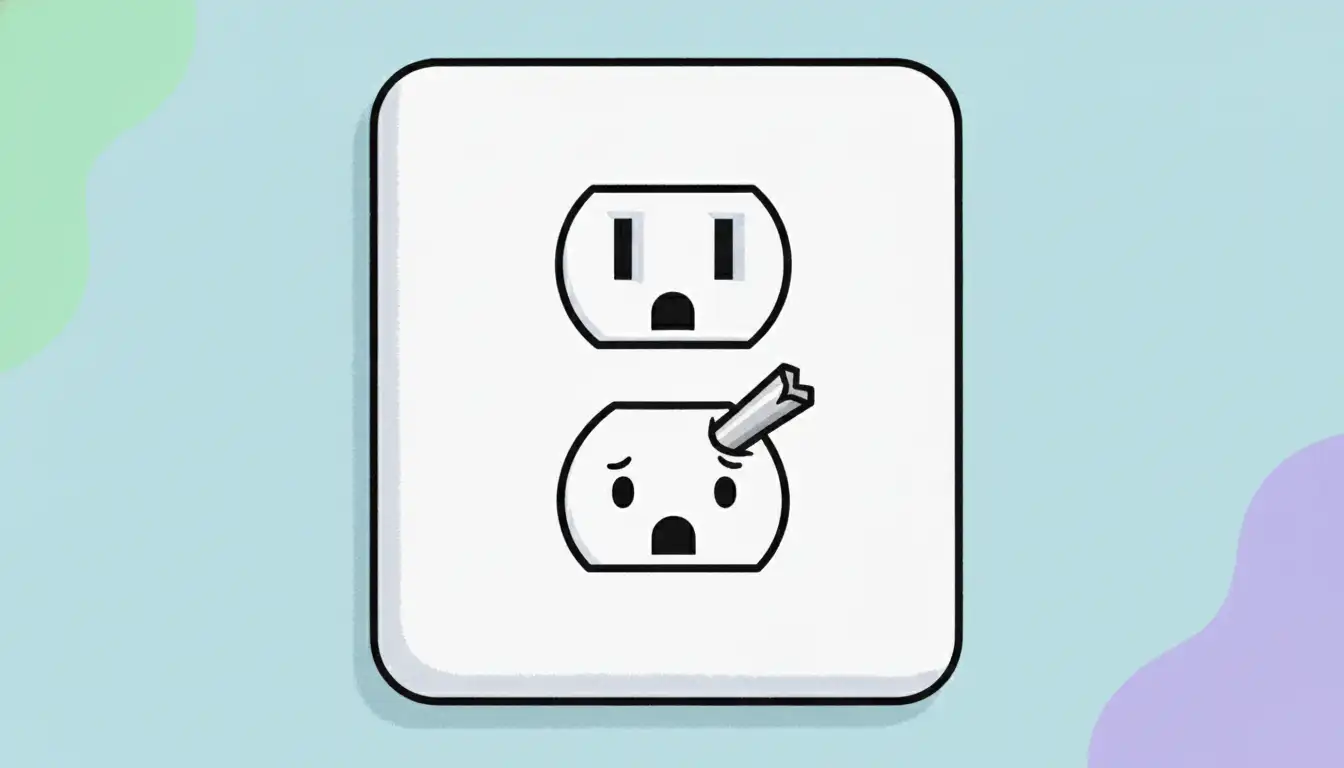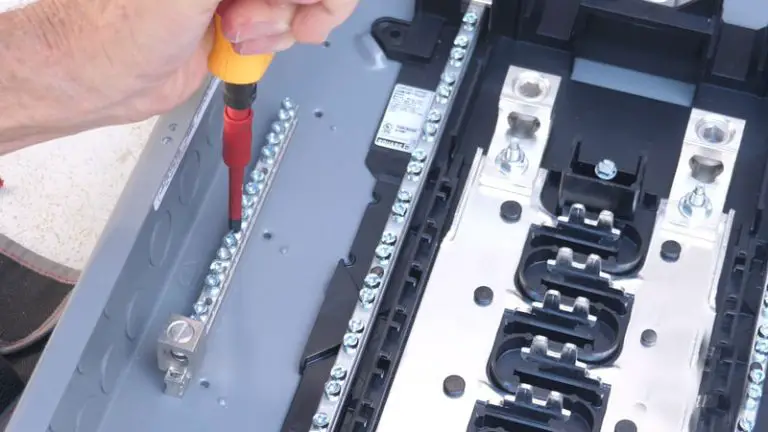Open Ground Outlet? This Hidden Danger Puts Your Home at Risk
You plug in a new appliance or a simple outlet tester and see a warning: “Open Ground.” It’s a cryptic message that many homeowners ignore. However, this is not a minor glitch; it’s a critical safety failure hiding within your walls.
An open ground fault represents a silent but significant hazard. It leaves your family vulnerable to electric shock and your expensive electronics defenseless against power surges.
You'll Learn About
What Exactly Is an Open Ground?
To understand the danger, you first need to know how a modern outlet is wired. Every standard three-prong outlet has three connections: a “hot” wire that delivers power, a “neutral” wire that completes the circuit, and a “ground” wire.
The ground wire is a crucial safety feature. It’s a dedicated path for electricity to travel to the earth if a fault occurs, preventing metal appliance casings from becoming energized. An “open ground” means this safety wire is disconnected or broken somewhere along the line, rendering it useless.
The Shocking Truth: Why an Open Ground Is Dangerous
Ignoring an open ground is a gamble with serious consequences. The absence of this safety path creates multiple layers of risk that can impact both your safety and your property.
The Immediate Risk of Electric Shock
The primary purpose of the ground wire is to protect you from electric shock. If a hot wire inside an appliance comes loose and touches the metal frame, the entire device becomes live. Without a ground, this stray electricity has no safe escape path.
If you touch that energized appliance, your body can become the bridge to the ground, resulting in a severe or even fatal electric shock. The ground wire is designed to instantly trip the circuit breaker in this scenario, cutting off the power before anyone can get hurt.
Hidden Fire Hazards from Fault Currents
An open ground can also create a serious fire risk. When a fault occurs, the electricity will seek any path to the ground. This could be through surrounding flammable materials like wood framing, insulation, or dust.
This uncontrolled electrical path can generate intense heat, arcing, and sparks, which are prime conditions for a fire to ignite within your walls. This is especially true if you are dealing with the fallout from unpermitted electrical work, which is a common cause of such faults.
Destroyed Electronics and Useless Surge Protectors
Many people believe a surge protector will shield their valuable electronics like computers, TVs, and smart home devices. However, a surge protector cannot function without a proper ground connection.
Surge protectors work by diverting excess voltage from a power surge safely to the ground. With an open ground, there is nowhere for that damaging voltage to go. Instead, it flows directly into your sensitive electronics, potentially destroying them instantly or causing gradual degradation over time.
How to Uncover an Open Ground Fault in Your Home
The most reliable way to check for an open ground is with an inexpensive electrical receptacle tester. You can find these at any hardware store. Simply plug it into the outlet, and the pattern of lights will indicate the wiring status.

Most testers use a simple color-coded key. Typically, two amber lights indicate correct wiring, while a combination like one amber and one red light might signal an open ground. Always refer to the chart on the tester itself for an accurate reading.
Subtle Clues You Shouldn’t Ignore
Sometimes, your home provides subtle hints of wiring problems before you even use a tester. Pay attention to outlets that feel warm to the touch or have scorch marks. You may also notice issues like outlet covers that are bending or misshapen, which can be a sign of underlying heat and wiring problems.
The Most Common Causes of an Open Ground
An open ground fault can happen for several reasons, ranging from simple mistakes to signs of a much larger wiring problem. Understanding the cause is the first step toward a safe and effective solution.
Often, the culprit is simply a loose connection right at the outlet. The green ground screw may not have been tightened properly, or the wire may have shaken loose over time. This is particularly common in high-traffic areas or homes with vibrations from nearby construction.
It is also possible the ground wire itself has broken somewhere inside the wall. This can be a result of aging, damage during a renovation, or rodents chewing on the wiring. This type of damage can be difficult to locate without professional tools.
A frequent cause is the improper installation of a three-prong outlet on an old two-wire system. Some homeowners or handymen install modern outlets without a ground wire to connect them to. This creates the illusion of safety while providing none of the protective benefits.
Your Action Plan: How to Fix an Open Ground Safely
Once you’ve confirmed an open ground, you must take action. While a simple loose wire can sometimes be a DIY fix, working with electricity is inherently dangerous, and calling a qualified electrician is always the safest choice.
Step 1: Safety First – Turn Off the Power
Before any inspection or work begins, you must go to your electrical panel and turn off the circuit breaker that controls the affected outlet. Use your receptacle tester to confirm the power is completely off before proceeding.
Step 2: A Quick Visual Inspection
With the power off, you can safely remove the outlet cover plate and unscrew the outlet from the electrical box. Gently pull it out and look for a bare copper or green-coated wire. Check if it is securely fastened to the green screw on the outlet.
If you see a loose ground wire, tightening it may solve the problem. However, if the wire is broken, the box is crowded with wires, or you see any signs of scorching or melted plastic, stop immediately.
Step 3: When to Call a Professional Electrician
If the problem isn’t a simple loose connection at the outlet, the issue lies deeper within your home’s wiring. An electrician has the tools and expertise to trace the fault and perform a safe repair. It is never worth risking your safety to save a few dollars.

Comparing Your Long-Term Repair Options
An electrician will typically recommend one of a few solutions depending on the cause of the open ground and the age of your wiring. Each has different costs and benefits.
| Solution | Description | Pros | Cons |
|---|---|---|---|
| Fix Loose Connection | Locating and re-securing a disconnected ground wire at the outlet or in a junction box. | Inexpensive and fast if the problem is easily accessible. | May not be possible if the wire is broken inside a wall. |
| Install GFCI Outlet | A Ground Fault Circuit Interrupter (GFCI) outlet can be installed. It doesn’t create a ground but shuts off power instantly if it detects a current leak, protecting from shock. | Provides excellent shock protection. Less expensive than rewiring. | Does not provide a ground path for surge protectors. Does not protect equipment. |
| Rewire the Circuit | Running a new, modern electrical cable (with a ground wire) from the panel to the outlet(s). | The most complete and safest solution. Provides grounding for both people and electronics. | The most expensive and disruptive option, often requiring access to walls. |
The Smart Home Complication: Open Grounds and Modern Tech
Modern homes are filled with sensitive microprocessors in everything from smart speakers and TVs to kitchen appliances. These devices are far more vulnerable to electrical fluctuations than the simple electronics of the past.
An open ground creates an unstable electrical environment. Even small, unnoticeable power fluctuations that would normally be stabilized by the ground connection can cause cumulative damage to these delicate components, leading to mysterious glitches, shortened lifespans, and unexpected failures.
Preventing Future Electrical Issues
The best way to deal with electrical problems is to prevent them. Regular check-ups of your electrical system by a qualified professional can catch issues like open grounds before they become serious hazards.
If you’re planning a renovation, be aware of the risks involved. Projects that seem simple on the surface, like deciding to remove a wall without a permit, can easily lead to accidental damage to hidden wiring, creating dangerous faults. Even seemingly harmless materials can pose a risk; for example, it’s important to understand questions like, “is spackle toxic?” to ensure your renovation materials don’t create other health hazards.
Don’t Ignore the Warning Signs
An open ground is more than just an inconvenient light on a tester. It is a direct warning that a critical safety system in your home has failed. It compromises the safety of your family and the longevity of your expensive electronic devices.
Taking the time to test your outlets and address any faults you find is a small investment that pays huge dividends in safety and peace of mind. When in doubt, always trust the expertise of a licensed electrician to keep your home’s power safe and reliable.

